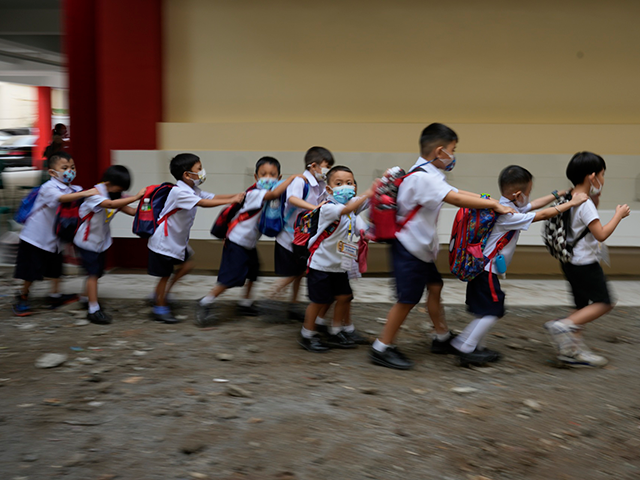Most primary and secondary schools in the Philippines held in-person classes on Monday for the first time since March 2020 when Manila ordered learning institutions nationwide to shut down in response to the Chinese coronavirus pandemic, the Philippine Star reported.
More than 28.03 million students across 24,000 schools nationwide attended in-person classes on August 22 in the Philippines, according to state enrollment data for the 2022 to 2023 school year. The Philippine Department of Education had hoped to enroll at least 28.6 million students for the new school year that started on Monday but fell short of this goal, according to the Philippine Star.
The federal bureau had previously said that while 24,000 elementary and middle schools would fully resume in-person learning on August 22, some 29,000 other schools would continue holding a mix of online and in-person classes through October. All public and private schools across the Philippine archipelago are expected to reopen for in-person classes held five days per week by November 2.
Children who returned to in-person classes on August 22 were forced to wear sanitary masks and line up for temperature checks before they were allowed entry to schools, according to a report by Al Jazeera and Agence France-Presse (AFP).
Millions of mask-wearing students across the archipelago returned to learning institutions on Monday more than two years after schools were forced to close and learners shifted to distance learning due to the COVID-19 pandemic.https://t.co/j59NJ1Ch8X
— Philstar.com (@PhilstarNews) August 22, 2022
The Philippines closed all of its schools to in-person learning at the start of the Chinese coronavirus pandemic in March 2020 and subsequently endured one of the world’s longest such shutdowns. While most schools in the Philippines requested that their students enroll in online classes over the past two-plus years, a 2021 study by the World Bank showed that the vast majority of Philippine schoolchildren did not engage in remote learning.
Philippine schools reopen after one of the world’s longest COVID-19 shutdowns https://t.co/gPq0QTYjeh pic.twitter.com/y9UktSYskI
— Al Jazeera English (@AJEnglish) August 22, 2022
Philippine students participated in online classes during the pandemic at the same rate (20 percent) as children in Ethiopia, which is one of the least developed countries in the world, according to the United Nations (U.N.) The Philippines, for comparison, is currently “on track to become an upper middle-income country in the next few years,” according to the World Bank.
The Philippines has an adult literacy rate of 96 percent while Ethiopia’s adult literacy rate is 52 percent. However, Philippine child literacy levels were so low in 2019 that the World Bank considered the nation to demonstrate a “learning poverty” rate of 90.9 percent. The U.N. Children’s Fund (UNICEF) defines “learning poverty” as a measure of “the share of children who cannot read a simple text with comprehension by age 10.”
The U.N. and other observers have regularly voiced concern over the past two years and five months that the Philippines’ prolonged school shutdowns would worsen the nation’s already severe education crisis, which pre-dates the coronavirus pandemic.

COMMENTS
Please let us know if you're having issues with commenting.